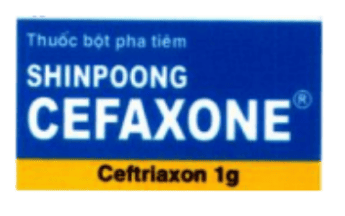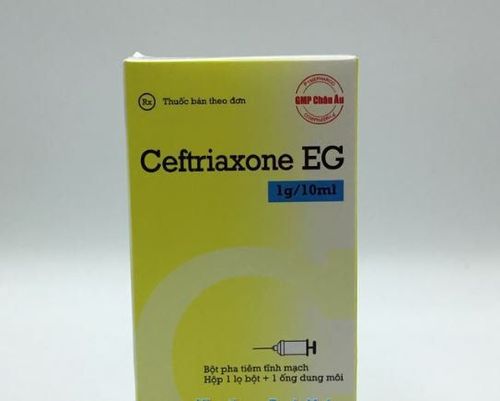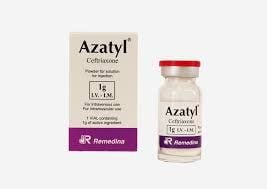This is an automatically translated article.
Consulted by BSCK II Pham Thi Son - Neurologist - Department of Medical Examination & Internal Medicine, Vinmec Hai Phong General HospitalHeadache can be just one symptom of many diseases, sometimes it is a separate disease. Cerebrospinal fluid test is one of the laboratory methods used to find the cause of headache.
1. Physiology of cerebrospinal fluid
Cerebrospinal fluid in adults is about 150-180ml, they are contained in the ventricles, subarachnoid space and cerebral cisterns. Born from the choroid plexus, the cerebrospinal fluid fills the lateral ventricles, through the foramen of monro and the third ventricle, through the foramen of Luschka into the subarachnoid space of the brain, and through the foramen of Magendie to the subarachnoid space of the spinal cord. Pacchioni granules help the cerebrospinal fluid to be reabsorbed. On average, every hour, about 20ml of CSF is produced, and an equal amount of CSF is absorbed. The human cerebrospinal fluid was changed three times in 24 hours. Cerebrospinal fluid has the function of protecting the brain and spinal cord against mechanical trauma, participating in the nutritional and metabolic tasks of the central nervous system. The junctional regions function to regulate the biological components of the permanent cerebrospinal fluid. These are the blood-cerebrospinal fluid, blood-blood, and cerebrospinal fluid-blood barrier systems.2. Function of cerebrospinal fluid
The cerebrospinal fluid has three main functions as follows:Protects the central nervous system against mechanical trauma, ensures the circulation of nervous fluids, hormones, antibodies and white blood cells. Participates in the regulation of pH and electrolyte balance of the central nervous system. Cerebrospinal fluid will have corresponding changes when the central nervous system is damaged.
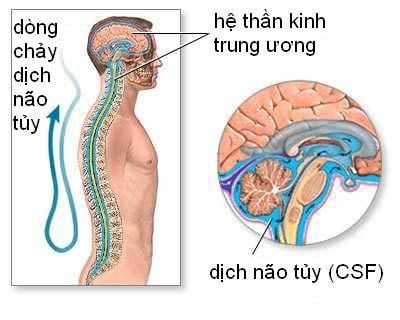
3. Methods of obtaining cerebrospinal fluid
There are 3 methods to collect cerebrospinal fluid:Selective method of large pool or suboccipital puncture, collection of cerebrospinal fluid from a large tank, this method is indicated in special cases. Lumbar puncture method: obtaining cerebrospinal fluid from the subarachnoid space of the lumbar spine, this is a commonly indicated route in clinical practice. Collecting cerebrospinal fluid from the ventricles is often done in conjunction with surgery. Cerebrospinal fluid obtained from different sites will have different biochemical composition. Lumbar puncture is an important diagnostic method commonly applied in clinical practice.
4. What is the cerebrospinal fluid test for?
To diagnose the disease:Study of cerebrospinal fluid pressure, circulation of cerebrospinal fluid CSF test (biochemistry, cells, microbiology, pH, quantification of enzymes and transmitters) nerve...). Nerve root sheath, myelogram with contrast injection... To treat the disease:
Injecting drugs into the spinal subarachnoid space Local anesthetics serve the purpose of surgery. Antibiotics, corticosteroids... to treat diseases of the central nervous system or nerve root diseases. To monitor treatment results: Normal cerebrospinal fluid is colorless and transparent. The density of the normal cerebrospinal fluid is 1.006 - 1.009, the viscosity of the cerebrospinal fluid is 1.01 - 1.06, the pH is 7.4 - 7.6.
5. In what cases is the cerebrospinal fluid test not done?
Brain tumor Increased pressure in the skull Severe cerebral edema Infected lumbar skin Bacterial infection Neck cord injury Coagulation disorders6. Complications and complications may be encountered when testing cerebrospinal fluid
Infection (abscess at puncture site, purulent meningitis...) Brain collapse Headache after lumbar puncture Bleeding (causes epidural hematoma or subarachnoid hemorrhage)...7. Cerebrospinal fluid test procedure
Need to carefully prepare necessary tools such as emergency drugs, anesthetics, bandages, gauze, alcohol cotton, specialized needles, test tubes for cerebrospinal fluid...Patients need to prepare carefully before performing cerebrospinal fluid test:
The patient needs to have ophthalmoscopy, electrocardiogram recording, blood coagulation test, anesthetic response test, blood pressure monitoring, pulse... purpose tips, encouragement, ...). The patient needs to lie in a flexed position, knees close to the abdomen, head flexed to the chest, hands hugging knees during the procedure. Exposing the lumbar region, disinfecting the needle puncture area. Cover the hole with gasoline, leaving the puncture area open.
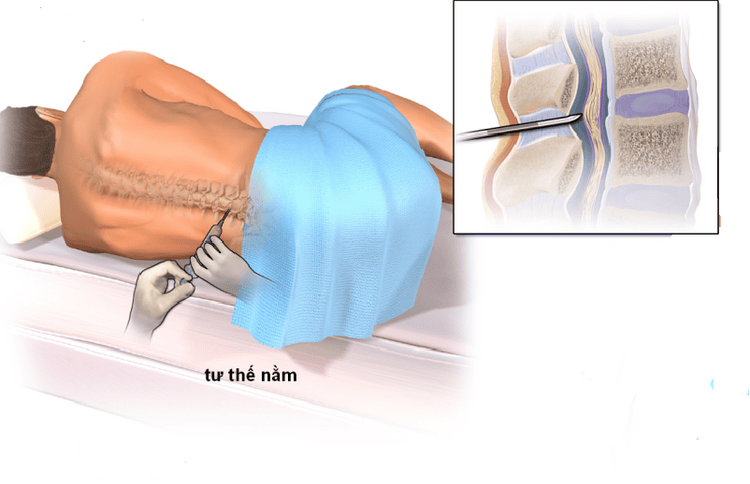
8. Evaluation of results
Normal cerebrospinal fluid is colorless and transparent.CSF pressure varies with age (children 10-100mm H20 and adults 80-180mmH20)
Cell count is 0-3 cells/mm3 of fluid. If more than 5 cells/mm3 of fluid is a pathological state
Cellular changes:
In tuberculous meningitis: The cerebrospinal fluid is lemon yellow, clear, pressure is increased, cells are increased, at first white neutrophils and lymphocytes, the latter predominating (70-90%). If the solution is left to settle in the test tube for 24 hours, there will be a scum. Protein slightly increased, glucose, sugar and salt decreased, CSF culture can show BK (+). In purulent meningitis: CSF is cloudy, the number of cells increases (500-1000 white blood cells/mm3), mostly neutrophils, protein increases (100-300 mg %), glucose decreases markedly. , NaCI is normal. Viral meningitis: slightly increased protein, mainly lymphocytes, the color of the cerebrospinal fluid is clear. Reactions like Pan y and Gnome Applets are positive. Cerebrovascular accident: For patients with intracranial hemorrhage: CSF may mix with non-coagulated blood in the test tubes, because blood flows into the subarachnoid space, protein increases and the proportion of cell walls in CSF is plasma. same as in blood. In patients with bleeding in the brain parenchyma and close to the subarachnoid space or the ventricles, the cerebrospinal fluid may also be mixed in the blood. However, because of the small amount of blood, the cerebrospinal fluid is usually only pale pink or requires microscopic examination to see red blood cells. In the case of blood that has been bleeding for many days, after testing, only bilirubin remains. For patients with cerebral infarction: CSF pressure is slightly increased, protein is slightly increased, cells are normal, most tests show normal results. In patients with cerebral infarction: cerebrospinal fluid pressure is elevated, there is protein-cell dissociation, protein is increased while the number of cells is still normal. Vinmec Hai Phong International General Hospital is a prestigious address in the examination and treatment of neurological diseases in general and headaches in particular:
Hospital with modern equipment: Being the first hospital in Hai Phong owns a Signa Pioneer 3.0 Tesla Magnetic Resonator of GE (USA) and a 640-slice Aquilion One (Vision Edition) CT scanner from Toshiba (Japan), the means of early and accurate diagnosis of lesions. blood vessels and nerves. Currently, only Vinmec hospital in Hai Phong has a video EEG machine, which is of high value in accurately diagnosing epilepsy. In addition, other testing systems of the hospital are modern and ensure the correct process. Professional medical team, examined by Specialist Doctor II. Pham Thi Son - Department of Medical Examination & Internal Medicine, Vinmec Hai Phong International General Hospital has 20 years of experience in the field of neurology. An EEG is one of several tests that can be used to find the cause and diagnose a headache. However, not all patients with headaches need this test. Only when there are instructions of specialized doctors, the patient can be done.
Please dial HOTLINE for more information or register for an appointment HERE. Download MyVinmec app to make appointments faster and to manage your bookings easily.








